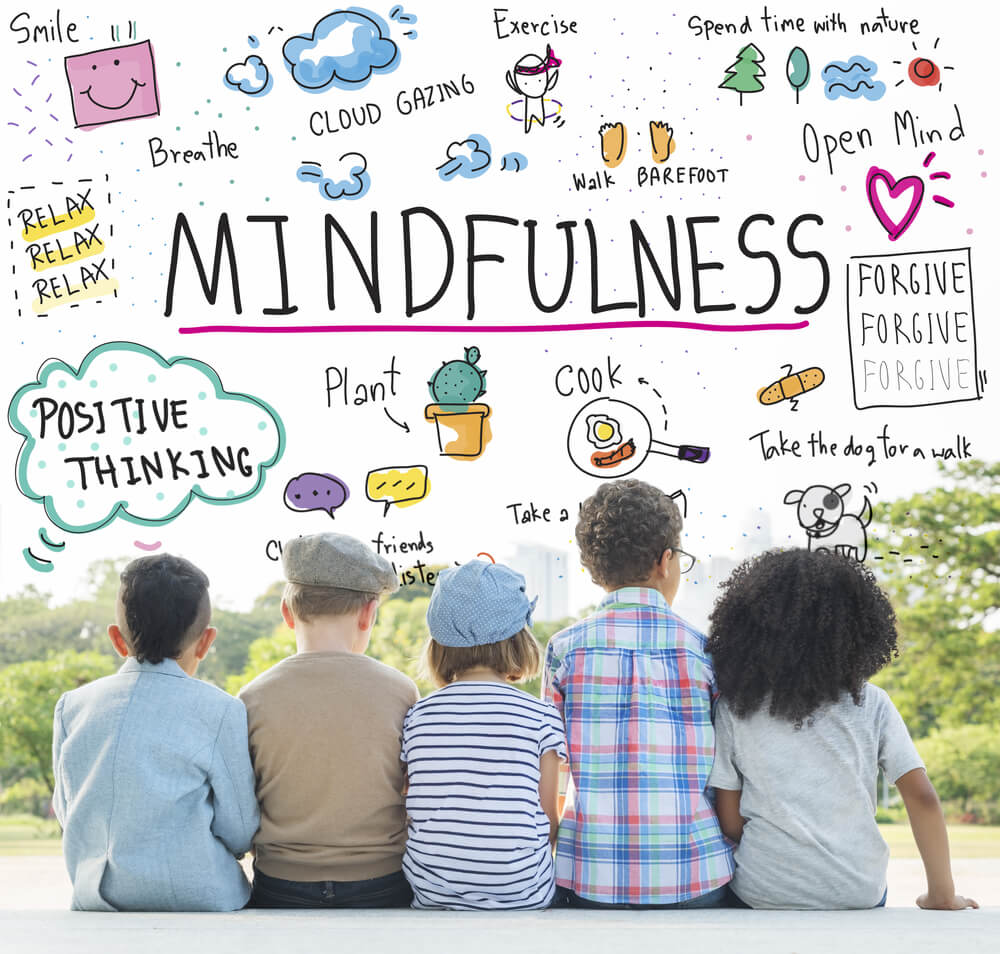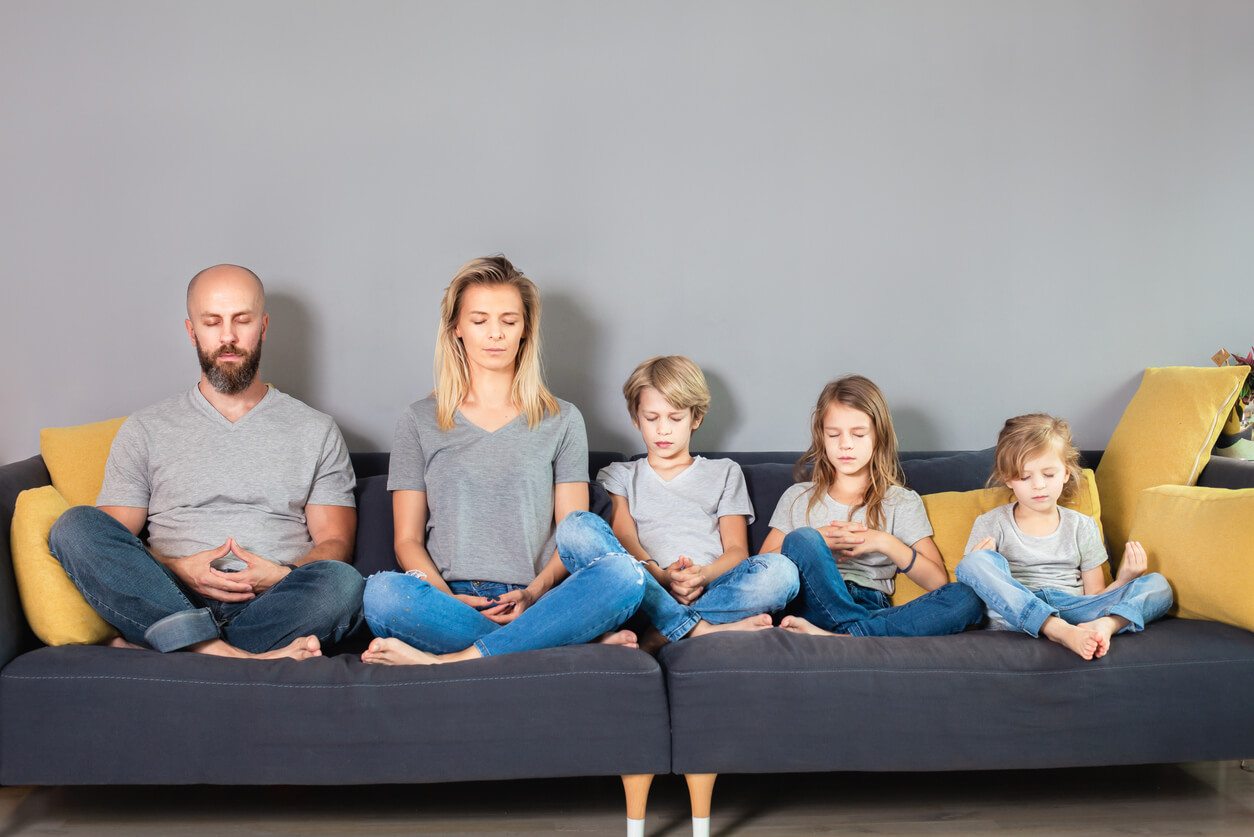5 Mindfulness Exercises for Children with ADHD


Written and verified by the psychologist Mara Amor López
Although children with ADHD have difficulty focusing their attention in a sustained manner and have difficulty planning, it has been shown that mindfulness exercises can help improve their symptoms.
One of the objectives of this technique is to focus our minds on breathing in order to achieve a state of relaxation. And also, to optimize the ability to concentrate and control automatic responses.
Many parents whose children have this condition have already implemented these exercises in their own routines, as they help them to improve their relationship with their children. So, if you’re the mother of a child with ADHD, here are some exercises for you to try mindfulness and corroborate its benefits. What are you waiting for?
If your child has ADHD, be sure to try these mindfulness exercises
Next, let’s see some mindfulness exercises that can be very useful to apply at home together with your children, whether or not they have ADHD. Shall we continue?

1. Practicing breathing with a stuffed animal or doll
For a child with ADHD, it’s quite difficult to concentrate on breathing, but if they receive the help of their “inseparable friend”, it’ll surely be easier.
To do this mindfulness exercise, we’ll ask the child to take their favorite stuffed animal or doll, lie on the bed or sofa face up, and put it on their belly. Then, we’ll ask them to take in air through their nose little by little and expel it through their mouth gently.
They should concentrate on the movement of their toy and see how it rises and falls in time with their breathing. This will make them focus their attention on this process.
2. Magnetic hands
Children like this exercise very much and can consider it an entertaining game.
Stand in front of the child and ask them to take deep breaths. In the meantime, they have to stretch their arms forward and keep their palms in front of them. Also, ask them to imagine that they have a magnet in their hands that makes their palms want to come together.
Next, ask them to slowly bring their hands closer together, but without touching. Before making contact, they should separate them again, but at a short distance, because “the magnets” won’t let them move far away.
Encourage the child to repeat this about 7 times and watch how they focus their attention on the activity.
3. We’re going on safari!
This exercise is a lot of fun and also helps motivate infants to practice mindfulness.
To put it into practice, you need to have a natural environment, whether it’s a mountain, the sea, a lake or the countryside. Once there, ask your child to record as many sounds as possible: Birds chirping, frogs singing, the wind, insect noises, among others. This will help them focus their attention and enjoy this original activity.
4. I recognize my emotions
In this exercise, you need to ask the child how they feel, as the goal is to detect their emotional state.
Before starting, you need to explain that emotions are like the weather: Variable. Sometimes it’s sunny, sometimes cloudy, rainy, windy, or calm. Also, point out that just as you can’t change the weather, you can’t change your feelings, but you can change the way you express them.
By repeating this technique, you’ll help your child to gradually identify their emotions and learn to channel them in a healthy way.
5. A mindfulness walk
This activity is very good for children with ADHD, as it keeps them active and at the same time, trains their attention.
To implement the exercise, you should look for a place outside the house, but one that you know very well. The task will consist of detecting small details that you haven’t paid attention to before. For example, sounds, aromas, noises, or sensations.

About mindfulness exercises for children with ADHD, we can say…
The best way to teach children these mindfulness exercises is through practice, especially to obtain positive results in their lives.
You can find a time of day to dedicate to meditation as a family, as adults also benefit from this habit. What are you waiting for to start noticing the results?
Although children with ADHD have difficulty focusing their attention in a sustained manner and have difficulty planning, it has been shown that mindfulness exercises can help improve their symptoms.
One of the objectives of this technique is to focus our minds on breathing in order to achieve a state of relaxation. And also, to optimize the ability to concentrate and control automatic responses.
Many parents whose children have this condition have already implemented these exercises in their own routines, as they help them to improve their relationship with their children. So, if you’re the mother of a child with ADHD, here are some exercises for you to try mindfulness and corroborate its benefits. What are you waiting for?
If your child has ADHD, be sure to try these mindfulness exercises
Next, let’s see some mindfulness exercises that can be very useful to apply at home together with your children, whether or not they have ADHD. Shall we continue?

1. Practicing breathing with a stuffed animal or doll
For a child with ADHD, it’s quite difficult to concentrate on breathing, but if they receive the help of their “inseparable friend”, it’ll surely be easier.
To do this mindfulness exercise, we’ll ask the child to take their favorite stuffed animal or doll, lie on the bed or sofa face up, and put it on their belly. Then, we’ll ask them to take in air through their nose little by little and expel it through their mouth gently.
They should concentrate on the movement of their toy and see how it rises and falls in time with their breathing. This will make them focus their attention on this process.
2. Magnetic hands
Children like this exercise very much and can consider it an entertaining game.
Stand in front of the child and ask them to take deep breaths. In the meantime, they have to stretch their arms forward and keep their palms in front of them. Also, ask them to imagine that they have a magnet in their hands that makes their palms want to come together.
Next, ask them to slowly bring their hands closer together, but without touching. Before making contact, they should separate them again, but at a short distance, because “the magnets” won’t let them move far away.
Encourage the child to repeat this about 7 times and watch how they focus their attention on the activity.
3. We’re going on safari!
This exercise is a lot of fun and also helps motivate infants to practice mindfulness.
To put it into practice, you need to have a natural environment, whether it’s a mountain, the sea, a lake or the countryside. Once there, ask your child to record as many sounds as possible: Birds chirping, frogs singing, the wind, insect noises, among others. This will help them focus their attention and enjoy this original activity.
4. I recognize my emotions
In this exercise, you need to ask the child how they feel, as the goal is to detect their emotional state.
Before starting, you need to explain that emotions are like the weather: Variable. Sometimes it’s sunny, sometimes cloudy, rainy, windy, or calm. Also, point out that just as you can’t change the weather, you can’t change your feelings, but you can change the way you express them.
By repeating this technique, you’ll help your child to gradually identify their emotions and learn to channel them in a healthy way.
5. A mindfulness walk
This activity is very good for children with ADHD, as it keeps them active and at the same time, trains their attention.
To implement the exercise, you should look for a place outside the house, but one that you know very well. The task will consist of detecting small details that you haven’t paid attention to before. For example, sounds, aromas, noises, or sensations.

About mindfulness exercises for children with ADHD, we can say…
The best way to teach children these mindfulness exercises is through practice, especially to obtain positive results in their lives.
You can find a time of day to dedicate to meditation as a family, as adults also benefit from this habit. What are you waiting for to start noticing the results?
All cited sources were thoroughly reviewed by our team to ensure their quality, reliability, currency, and validity. The bibliography of this article was considered reliable and of academic or scientific accuracy.
- Moreno, L., Casillas Lara, M. L., Magistrati Jimenez, E., & Molina Gómez, B. Mindfulness en niños: Experiencia en psicoterapia grupal. En internet: https://melkartcongresos.com/uploads/0004/PO-18.pdf
- Snel, E. (2013). Tranquilos y atentos como una rana: La meditación para niños… con sus padres. Editorial Kairós.
- Pérez, J. R., Cuervo, N. M., Medina, D. A. R., Sánchez, D. P. B., & Torres, I. A. (2021). Mindfulness infantil: efectos psicofisiológicos, cognitivos y psicosociales. Revista de Psicología de la Universidad Autónoma del Estado de México, 10(19), 86-106. En internet: https://revistapsicologia.uaemex.mx/article/view/16053
This text is provided for informational purposes only and does not replace consultation with a professional. If in doubt, consult your specialist.








